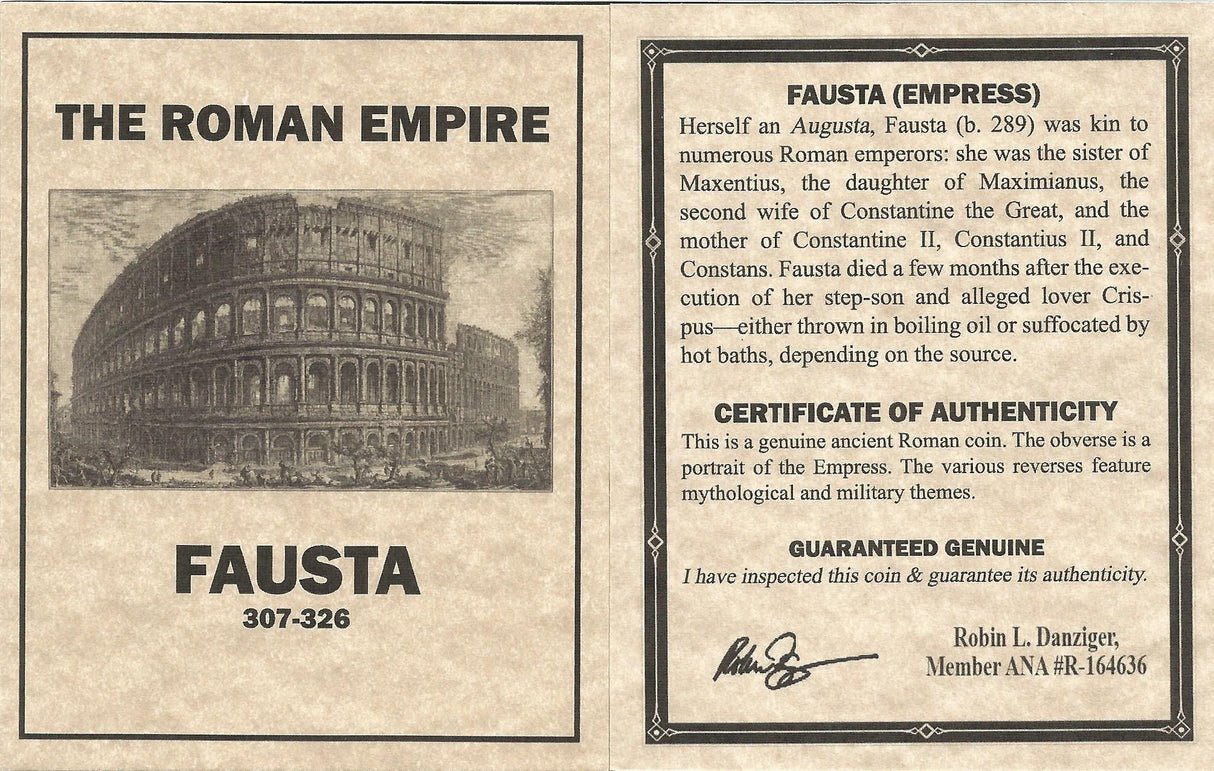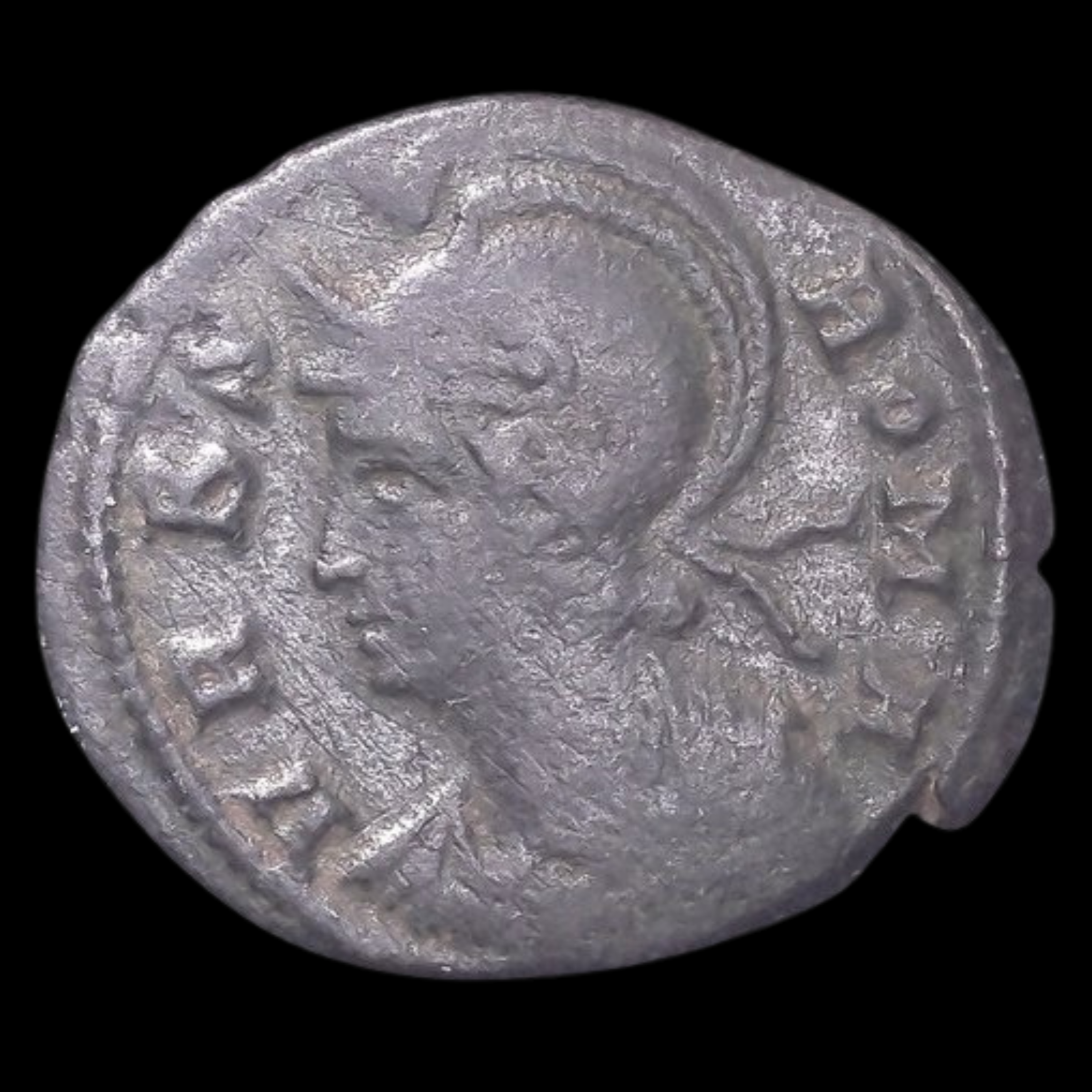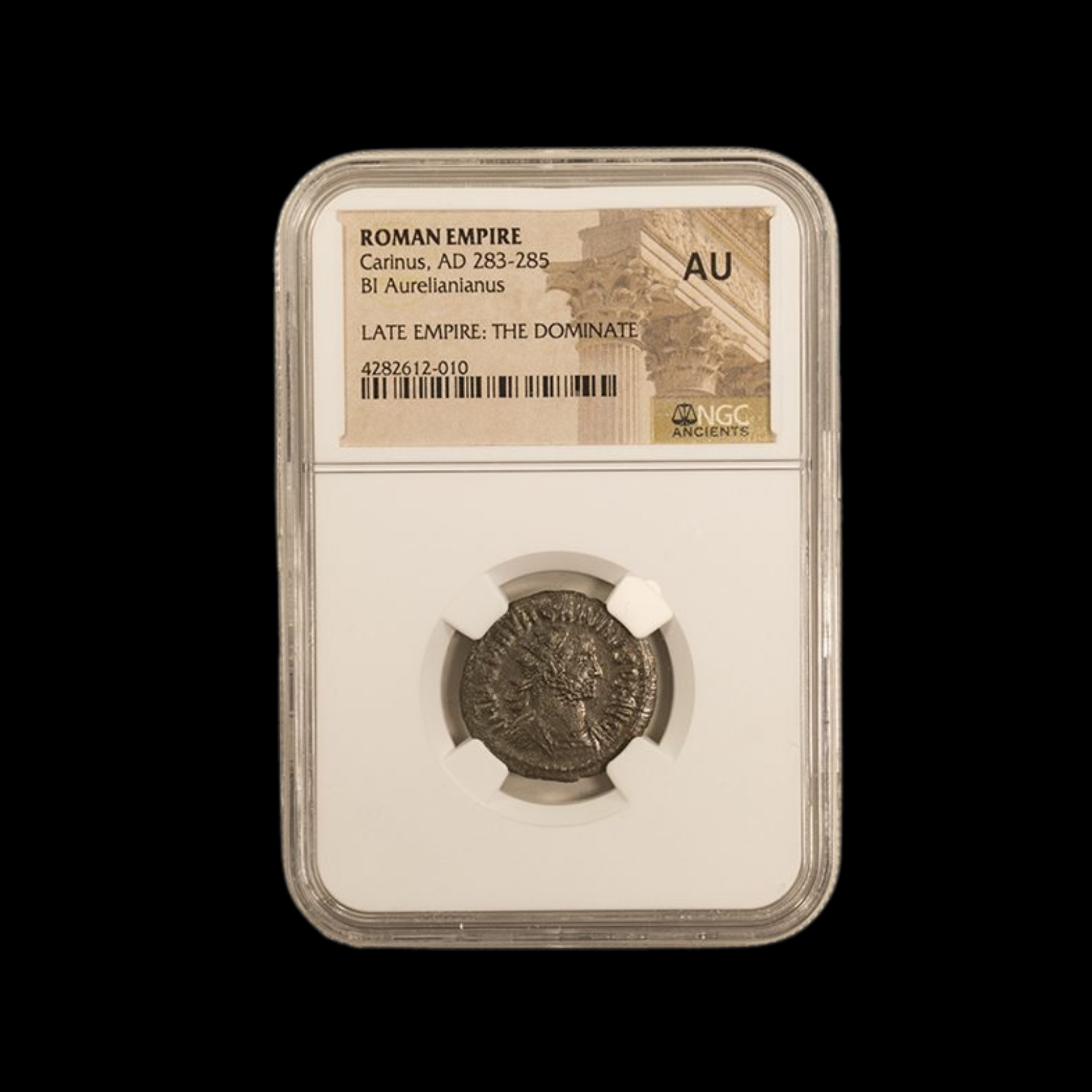 Image 1 of 6
Image 1 of 6

 Image 2 of 6
Image 2 of 6

 Image 3 of 6
Image 3 of 6

 Image 4 of 6
Image 4 of 6

 Image 5 of 6
Image 5 of 6

 Image 6 of 6
Image 6 of 6







Roman Billon Antoninianus of Numerian (about 1,740-1,741 years ago)
The coins shown are representative examples of the grade and type, but not the actual specimens for sale. For details on NGC’s grading standards and definitions, please refer to our NGC Grading page.
This silver-washed bronze coin is an Antoninianus featuring Emperor Numerian, who briefly ruled as co-emperor of the Roman Empire for approximately one year. Issued during his short reign between 283 and 284 CE, this coin represents the continuing turbulence of imperial succession during the late Crisis of the Third Century.
Coin Description:
Front side: Portrait of Emperor Numerian facing right, wearing a radiate crown (distinguishing feature of the Antoninianus denomination), with his name and titles in Latin around the edge.
Back side: Likely features military themes, personifications of virtues, or religious imagery common to the period.
Technical Details:
Billon composition (low silver content mixed with copper)
Denomination: Antoninianus (technically a double-denarius, though with minimal silver content by this period)
Weight: Approximately 3-4 grams
Diameter: Approximately 22-23 mm
NGC Certified for authentication and preservation
Minted between 283-284 CE
Condition as specified by NGC certification
Historical Significance: Numerian's brief reign illustrates the precarious nature of imperial power during the late 3rd century. Son of Emperor Carus, he was first appointed Caesar (junior emperor) in 282 CE and then elevated to co-emperor in 283 CE alongside his brother Carinus. After his father's mysterious death during a Persian campaign, Numerian began the journey back to Rome with the eastern armies. However, he was found dead in his litter, reportedly killed in a conspiracy orchestrated by his praetorian prefect Aper, who was subsequently executed by Diocletian. This assassination paved the way for Diocletian's rise to power and the eventual establishment of the Tetrarchy system that would stabilize the Roman Empire for decades to come.
The coins shown are representative examples of the grade and type, but not the actual specimens for sale. For details on NGC’s grading standards and definitions, please refer to our NGC Grading page.
This silver-washed bronze coin is an Antoninianus featuring Emperor Numerian, who briefly ruled as co-emperor of the Roman Empire for approximately one year. Issued during his short reign between 283 and 284 CE, this coin represents the continuing turbulence of imperial succession during the late Crisis of the Third Century.
Coin Description:
Front side: Portrait of Emperor Numerian facing right, wearing a radiate crown (distinguishing feature of the Antoninianus denomination), with his name and titles in Latin around the edge.
Back side: Likely features military themes, personifications of virtues, or religious imagery common to the period.
Technical Details:
Billon composition (low silver content mixed with copper)
Denomination: Antoninianus (technically a double-denarius, though with minimal silver content by this period)
Weight: Approximately 3-4 grams
Diameter: Approximately 22-23 mm
NGC Certified for authentication and preservation
Minted between 283-284 CE
Condition as specified by NGC certification
Historical Significance: Numerian's brief reign illustrates the precarious nature of imperial power during the late 3rd century. Son of Emperor Carus, he was first appointed Caesar (junior emperor) in 282 CE and then elevated to co-emperor in 283 CE alongside his brother Carinus. After his father's mysterious death during a Persian campaign, Numerian began the journey back to Rome with the eastern armies. However, he was found dead in his litter, reportedly killed in a conspiracy orchestrated by his praetorian prefect Aper, who was subsequently executed by Diocletian. This assassination paved the way for Diocletian's rise to power and the eventual establishment of the Tetrarchy system that would stabilize the Roman Empire for decades to come.
































